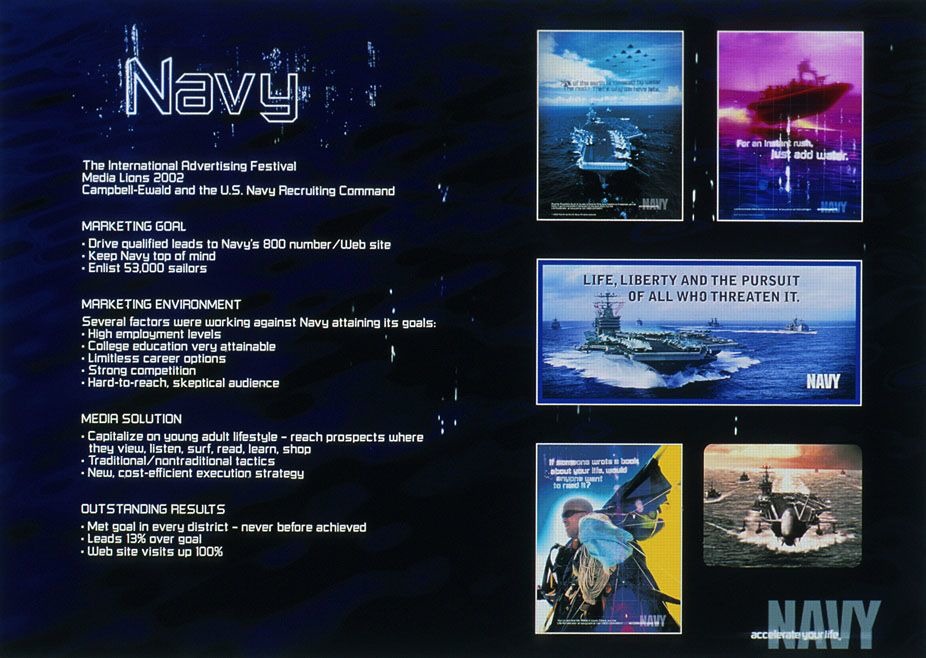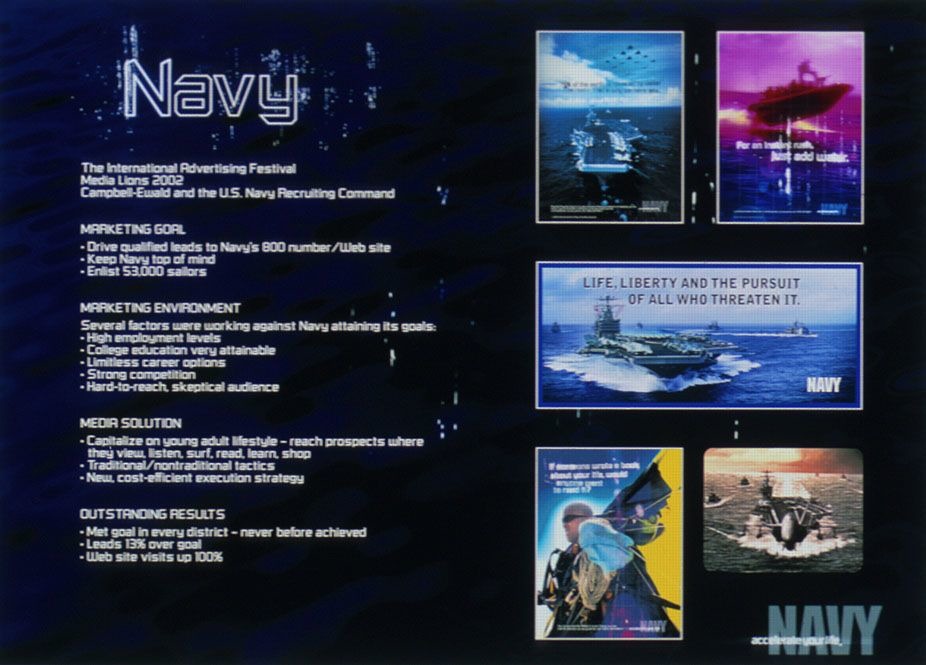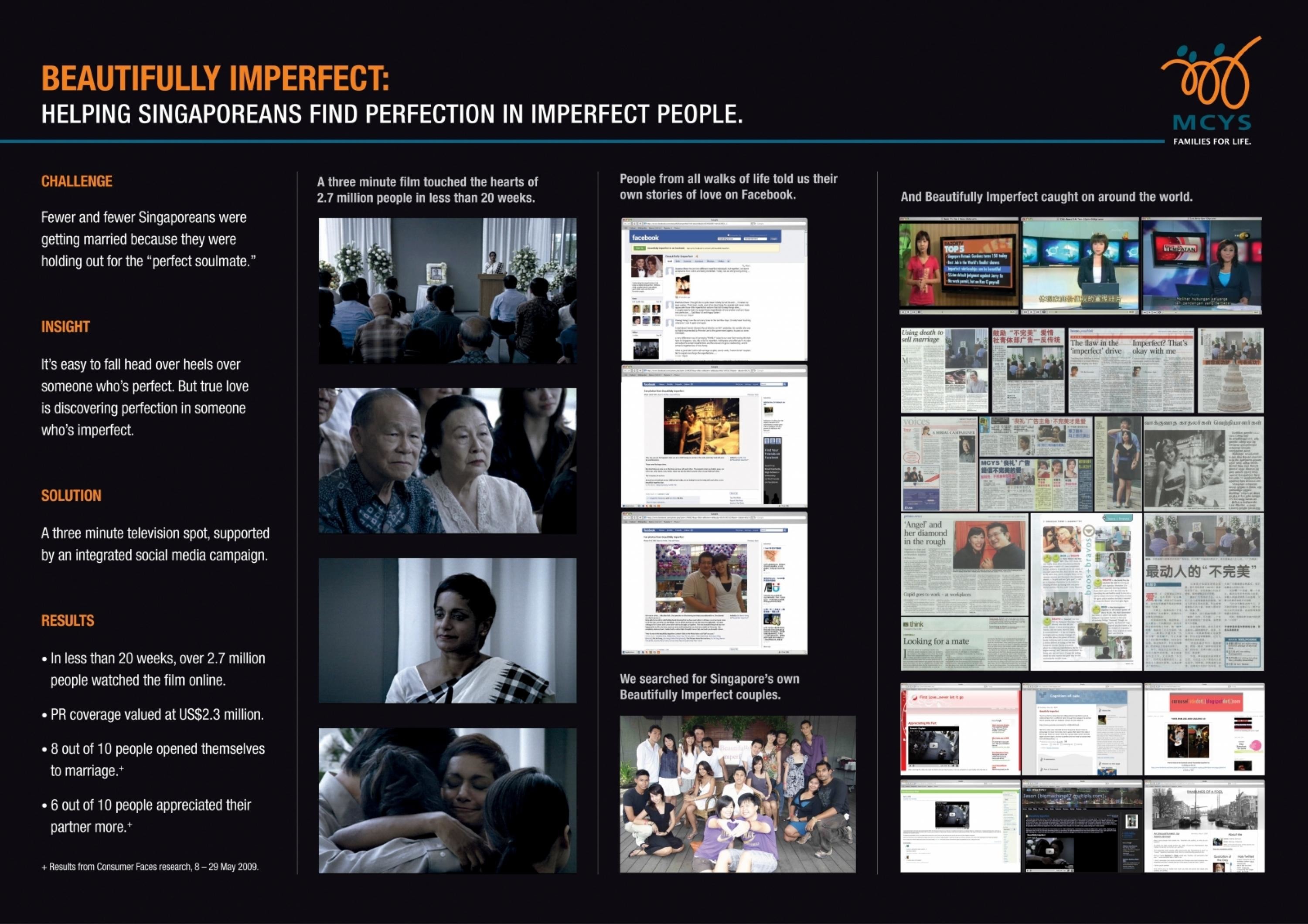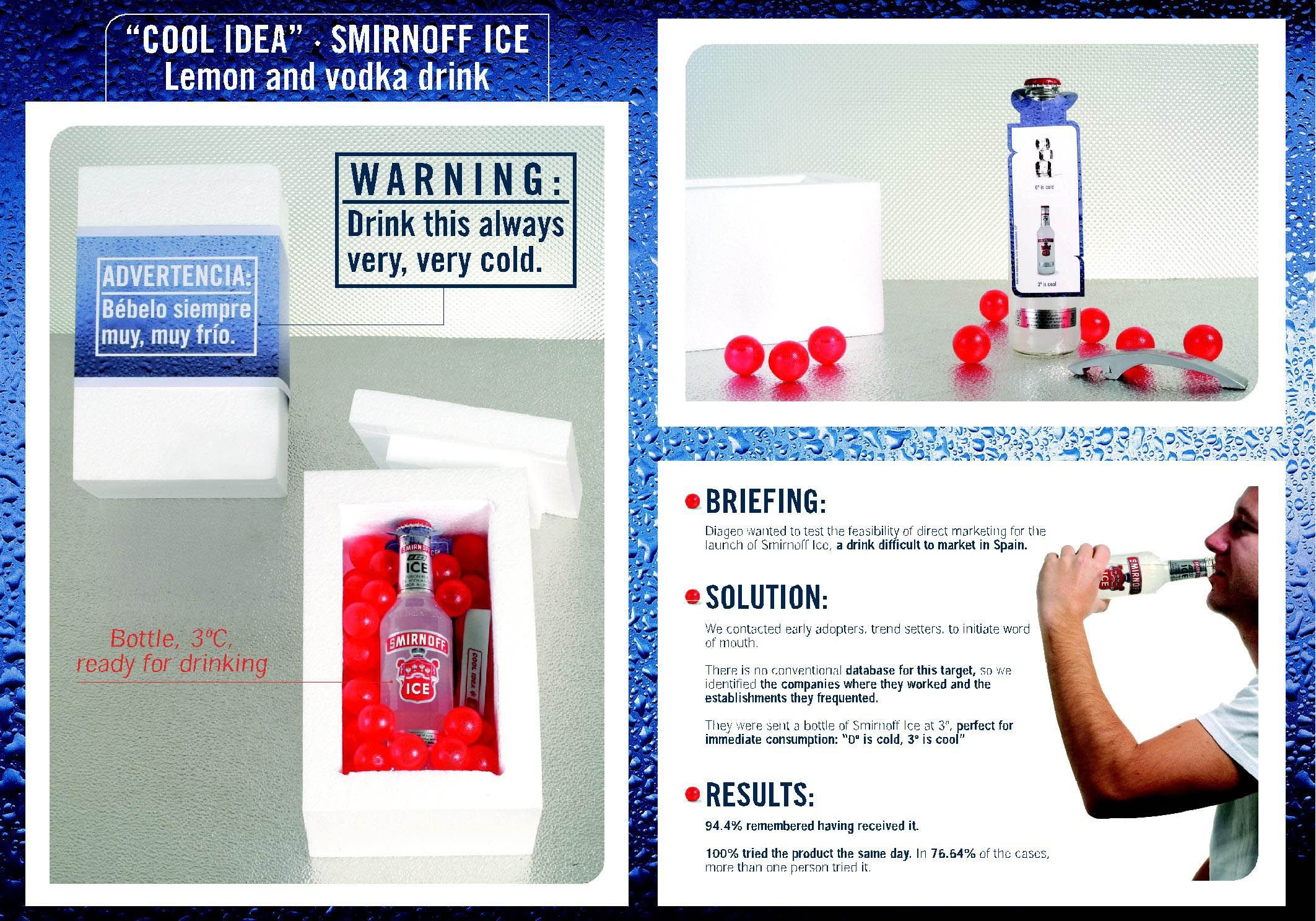Cannes Lions
US NAVY RECRUITING
CAMPBELL-EWALD ADVERTISING, Warren / US NAVY RECRUITING COMMAND / 2002


Overview
Entries
Credits
Overview
Description
The communication goals were very straightforward: Convey the multitude of reasons why service in the U.S. Navy can make a positive and lasting difference in the lives of today's youth.Keep Navy top of mind. Drive qualified leads to Navy's 800 number and website.Most importantly, enlist 53,000 sailors. Our approach was different from previous plans. Our plan embraced the lifestyle of today's youth.
We led with radio. Through research, we knew the importance of music to the young adult culture. Radio allowed us to address multiple segments of the general, African American, and Hispanic markets. We took advantage of radio's cost efficiencies while improving daypart mixes vs. previous buys by focusing on the most appropriate and targeted dayparts.
Unlike heavy network TV plans of the past, our television effort focused on highly selective cable networks like MTV, Comedy Central, and BET. We sponsored special programming and tied-in with two successful movies, Men of Honor and Behind Enemy Lines, to better connect with the mindset of the target. We initiated a comprehensive relationship with Viacom to extend Navy's presence via customized vignettes and a microsite.
Young adults are wired and our web approach included everything from job postings and optimized networks, to targeted site sponsorships and live webcasts. We skewed weekday impressions to non-school hours to make sure we were reaching high school juniors and seniors. We even implemented a way to acquire lead information within the context of a web ad, enabling users to request additional information about Navy without leaving their current site.We reached our target in key high schools via Channel One Television, posters, and ads in selective publications. We copy split creative, school-by-school, to ensure the message was best suited for the ethnicity of the audience. The campaign also included:- Direct Response TV to provide a way for prospects to request more information on Navy career opportunities.- A magazine schedule focusing on lifestyles/interests of our target: extreme sports, music, fitness, and technology. BRCs allowed readers an easy way to communicate with Navy.- A dedicated Hispanic effort.
- Junior/Community college newspaper/poster program.- An in-store television initiative reaching youth as they shopped for apparel, DVD/videos, and video games.
- We partnered with the NBA to enable Navy to participate in a grassroots tour designed to reach and recruit youth.
- Vocational publications addressed Officer targets.Finally, a quote from our lead client provided another indication of positive results. In a Report to Congress, RADM George E. Voelker reported, "I hope that 50 years from now I can sit in front of Congress and tell them that Campbell-Ewald has been our agency for 50 years and we're looking forward to another fifty." The media group developed a highly targeted and choreographed media solution that addressed the Navy target wherever they view, listen, surf, read, learn, and shop. The group recommended both traditional and non-traditional media, developed cross-promotional marketing programs, and found new and cost efficient ways to execute plan elements, with unprecedented results.We developed a better, more effective plan to reach young adults for our client, the U. S. Navy Recruiting Command. When our campaign began 15 months ago, Navy faced a daunting marketing environment. U.S. employment levels were high, a college education was very attainable, and career options for youth were almost limitless. Navy was also challenged by competition from other military service choices, most notably Army. Lastly, the decision to join the armed services is not made on impulse. Rather, it is a protracted decision that is driven by a number of factors and influences, communications being but one of them. The media team reviewed the marketing situation, conducted an extensive target audience analysis, and developed a sophisticated geographic segmentation involving postal zip code level recruiting data. The team also conducted an analysis of the media options available to young adults and evaluated a number of media plan alternatives.
Outstanding results make this submission special. After all, results are all that matter to a client whose "business" is driven entirely by numbers, in this case, very specific recruitment goals. Our combined efforts culminated in the Navy meeting its goal in every recruiting district in the U.S., a goal that has never before been met during wartime or peacetime. Leads are 13% above goal. Visits to navy.com are up 100% from year ago levels. The length of time per Navy website user session has increased 15%. This was all accomplished with a lower media investment than in previous years and at a per-recruit advertising level lower than the competition. Additionally, the recruitment increase was not a result of the events of September 11, 2001. Data shows that propensity to join the military has, in fact, declined compared to pre-9/11 levels.The total plan works because it recognizes and plays to the media preferences of today's youth. It understands the diversity of the audience and respects their choices. The plan delivers the overall marketing goals in a creative and cost efficient manner, making a better connection with this hard to reach and often-skeptical audience.
Execution
The media group developed a highly targeted and choreographed media solution that addressed the Navy target wherever they view, listen, surf, read, learn, and shop. The group recommended both traditional and non-traditional media, developed cross-promotional marketing programs, and found new and cost efficient ways to execute plan elements, with unprecedented results.We developed a better, more effective plan to reach young adults for our client, the U. S. Navy Recruiting Command. When our campaign began 15 months ago, Navy faced a daunting marketing environment. U.S. employment levels were high, a college education was very attainable, and career options for youth were almost limitless. Navy was also challenged by competition from other military service choices, most notably Army. Lastly, the decision to join the armed services is not made on impulse. Rather, it is a protracted decision that is driven by a number of factors and influences, communications being but one of them. The media team reviewed the marketing situation, conducted an extensive target audience analysis, and developed a sophisticated geographic segmentation involving postal zip code level recruiting data. The team also conducted an analysis of the media options available to young adults and evaluated a number of media plan alternatives.
Similar Campaigns
7 items





